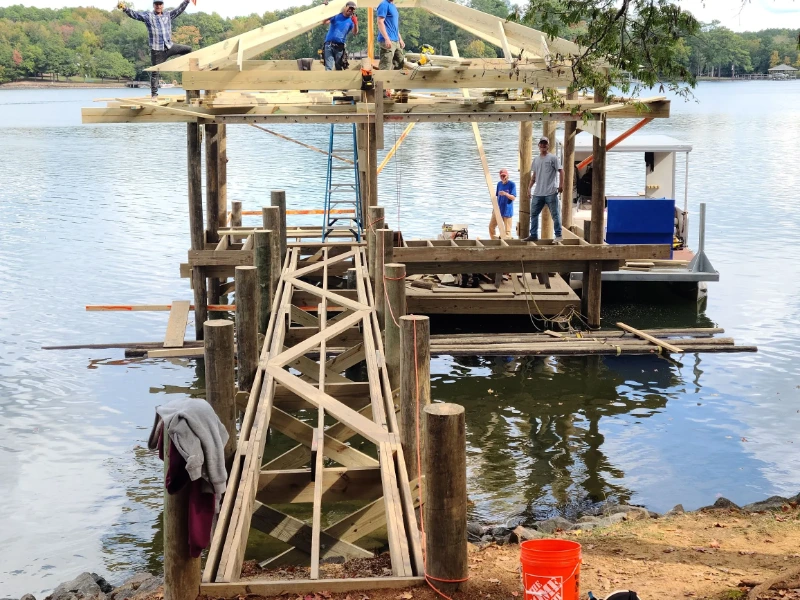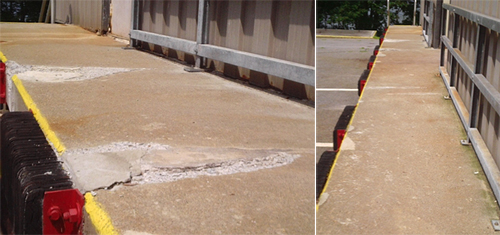Essential Guide to Inexpensive Dock Repairs for Homeowners
Essential Guide to Inexpensive Dock Repairs for Homeowners
Blog Article
How to Address Common Dock Fixing Issues for Safe Water Activities

Identifying Common Dock Issues
Recognizing typical dock problems is vital for maintaining the functionality and safety and security of your waterfront home. Normal assessments can assist uncover troubles before they end up being extreme, ensuring both the longevity of the dock and the safety and security of those that use it.
One more usual problem is the destruction of flotation protection gadgets. These tools are vital for maintaining the dock resilient, and any kind of damage or leaks can trigger the dock to listing or sink. Frequently looking for leakages or waterlogged floats can preempt extra significant issues.
Furthermore, algae and barnacle build-up on the dock's surface can develop unsafe and dangerous problems. This biofouling not only positions a threat to customers however can also accelerate the deterioration of the dock materials.
Lastly, inspecting for indicators of corrosion on metal elements is essential. Rust can compromise the integrity of the dock's structure, making it harmful. By routinely identifying these typical dock concerns, you can make certain that your dock remains useful and secure for years to come.
Fixing Rotting Timber
When attending to the problem of decomposing timber on your dock, it is essential to act quickly to stop more degeneration. Begin by extensively examining the whole structure to recognize all impacted locations. Use a screwdriver to penetrate the timber; if it sinks in quickly, the timber is most likely deteriorated and requires prompt interest.
When identified, get rid of the deteriorated sections utilizing a saw or chisel. Be certain to reduce back to healthy, solid wood, guaranteeing you remove all jeopardized material. After elimination, deal with the remaining timber with a timber preservative to stop future rot. This treatment will certainly help safeguard against dampness, which is the primary cause of timber decay.
Next, replace the eliminated areas with marine-grade lumber or pressure-treated wood, which are extra resistant to water damage. Secure the brand-new pieces with galvanized or stainless-steel bolts to avoid corrosion. Additionally, applying a water resistant sealant to the brand-new timber can supply an additional layer of security.
Safeguarding Loosened Boards
How do you ensure your dock continues to be secure and functional for all its customers? One important aspect is safeguarding loose boards, which can otherwise posture substantial hazards. Loose boards not only enhance the risk of stumbling however can also compromise the structural honesty of the entire dock.

For reinstallation, use stainless or galvanized steel screws, as these products use remarkable resistance to deterioration in marine settings. Ensure the screws are long enough to pass through deep right into the underlying support framework, but not so long that they stick out via the dock's surface area. Pre-drilling pilot holes can help avoid the wood from splitting.
Last but not least, maintain a routine assessment routine to determine and resolve any type of new concerns without delay. By protecting loose boards properly, you add to the general security and longevity of your dock, making it a trustworthy platform for water activities.
Stabilizing Unstable Pilings
Guaranteeing the stability of unsteady pilings is extremely important to preserving a practical and secure dock. Use a find more information level to inspect for vertical positioning and guarantee they are driven deep enough into the substratum to supply adequate support.
If the pilings are found to be helpful hints unpredictable, one efficient method for support is using extra bracing. Cross-bracing with dealt with lumber or galvanized metal can substantially boost security. Anchor the dental braces securely to both the pilings and the dock frame to distribute lots uniformly.

Routine upkeep and routine review of the pilings' stability are crucial to ensuring lasting dock security and capability.
Replacing Rusty Equipment
Dealing with unsteady pilings is just one facet of preserving a dock's stability; an additional essential worry is changing corroded hardware. Gradually, exposure to wetness and salt can result in the oxidation and corrosion of braces, screws, and bolts, endangering the entire framework's safety and security. Routine inspection for corrosion is crucial, especially after serious climate or seasonal modifications.
When rusty equipment is determined, immediate action is called for. Begin by selecting marine-grade stainless-steel or galvanized hardware, both developed to withstand the extreme marine atmosphere. Guarantee that you have the proper devices, such as screwdrivers and wrenches, to safely eliminate the old, corroded pieces without creating additional damages to the dock.
After getting rid of the rusty equipment, extensively tidy the impacted areas to remove any type of recurring corrosion or particles. Apply a rust-inhibiting primer to revealed steel surfaces prior to installing the new equipment. Tighten all fixtures safely to avoid future loosening, and periodically evaluate the fittings to guarantee ongoing stability.
Changing rustic hardware not only prolongs the dock's life expectancy but also dramatically improves the safety and security of water activities. By proactively taking care of corrosion, you shield both the framework and its individuals, making certain a safe and secure and enjoyable beachfront experience.
Final Thought
Routine inspections and Read Full Article upkeep are important to attend to common dock fixing issues and ensure secure water tasks. By identifying and remedying troubles such as decaying wood, loosened boards, unstable pilings, and rustic hardware, architectural security and longevity can be significantly improved. The application of proper treatments and marine-grade materials even more strengthens the dock against environmental stress factors. Such positive steps add to the total safety and security and performance of dock structures, promoting a protected setting for water-based activities.
Making certain the safety and security of water activities hinges dramatically on the correct maintenance and repair work of anchors (Dock Repairs). These gadgets are vital for keeping the dock buoyant, and any type of damage or leaks can create the dock to listing or sink. By consistently recognizing these typical dock concerns, you can guarantee that your dock stays useful and safe and secure for years to come
Making certain the security of unstable pilings is critical to maintaining a practical and safe dock.Routine evaluations and upkeep are important to address typical dock repair work issues and guarantee risk-free water activities.
Report this page